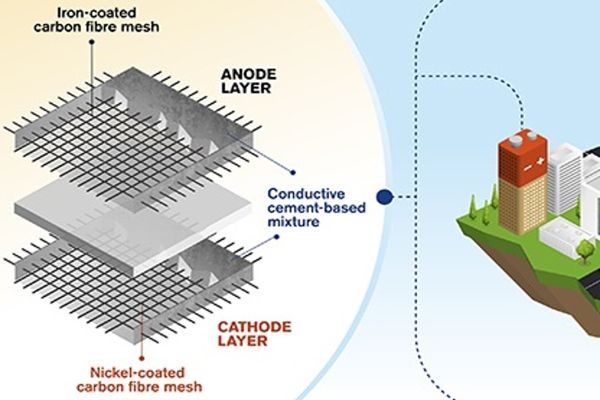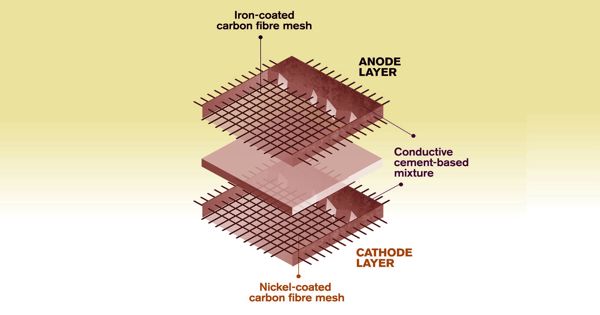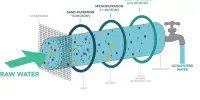Consider a twenty-story concrete structure that can store energy like a giant battery. Such a vision may one day become a reality thanks to groundbreaking research from Chalmers University of Technology in Sweden. Recently, researchers from the Department of Architecture and Civil Engineering published an article outlining a new concept for rechargeable batteries made of cement.
The ever-increasing demand for environmentally friendly building materials presents significant challenges for researchers. Doctor Emma Zhang, formerly of Chalmers University of Technology in Sweden, joined Professor Luping Tang’s research team several years ago to look for future building materials. Together they have now succeeded in developing a world-first concept for a rechargeable cement-based battery.
The concept begins with a cement-based mixture that is then supplemented with small amounts of short carbon fibers to increase conductivity and flexural toughness. The mixture is then embedded with a metal-coated carbon fiber mesh – iron for the anode and nickel for the cathode. This is the prototype that the researchers are now presenting after much experimentation.
Imagine an entire twenty storey concrete building which can store energy like a giant battery. Researchers recently published an article outlining a new concept for rechargeable batteries – made of cement.
“Previous research into concrete battery technology yielded disappointing results, so we realized we needed to think outside the box in order to develop a new method of producing the electrode. This particular concept, which is also rechargeable, has never been investigated before. We now have proof of concept at the lab scale “Emma Zhang elaborates.
The research of Luping Tang and Emma Zhang resulted in a rechargeable cement-based battery with an average energy density of 7 Watthours per square metre (or 0.8 Watthours per litre). The capacity of the battery is expressed in terms of energy density, and a conservative estimate suggests that the performance of the new Chalmers battery could be more than ten times that of previous concrete battery attempts. The energy density is still low when compared to commercial batteries, but this limitation could be overcome by the large volume at which the battery could be built when used in buildings.

A potential key to solving energy storage issues
The fact that the battery is rechargeable is its most important feature, and the possibilities for application are almost limitless if the concept is further developed and commercialized. Energy storage is an obvious possibility, as is monitoring. The researchers envision applications ranging from powering LEDs to providing 4G connections in remote areas, as well as cathodic protection against corrosion in concrete infrastructure.
“It could also be combined with solar cell panels, for example, to provide electricity and serve as the energy source for monitoring systems in highways or bridges, where sensors powered by a concrete battery could detect cracking or corrosion,” Emma Zhang suggests.
The concept of using structures and buildings in this manner has the potential to be revolutionary, as it would provide an alternative solution to the energy crisis by storing a large amount of energy.
Concrete, which is made by combining cement and other ingredients, is the most commonly used building material on the planet. It is far from ideal in terms of sustainability, but the potential to add functionality to it could add a new dimension. Emma Zhang offers her thoughts:
“We believe that in the future, this technology will allow for entire sections of multi-story buildings to be made of functional concrete. Given that a layer of this electrode could be embedded in any concrete surface, we’re talking about massive amounts of functional concrete.”
Challenges remain with service-life aspects
The concept is still in its early stages. The technical issues that must be resolved before the technique can be commercialized include extending the service life of the battery and developing recycling techniques. “Because concrete infrastructure is typically built to last fifty or even a hundred years, batteries would need to be refined to match this, or to be easier to exchange and recycle when their service life is up. For the time being, this presents a significant technical challenge “Emma Zhang explains.
However, the researchers are optimistic that their innovation has a lot to offer. “We are convinced that this concept will make a significant contribution to allowing future building materials to have additional functions such as renewable energy sources,” Luping Tang concludes.















